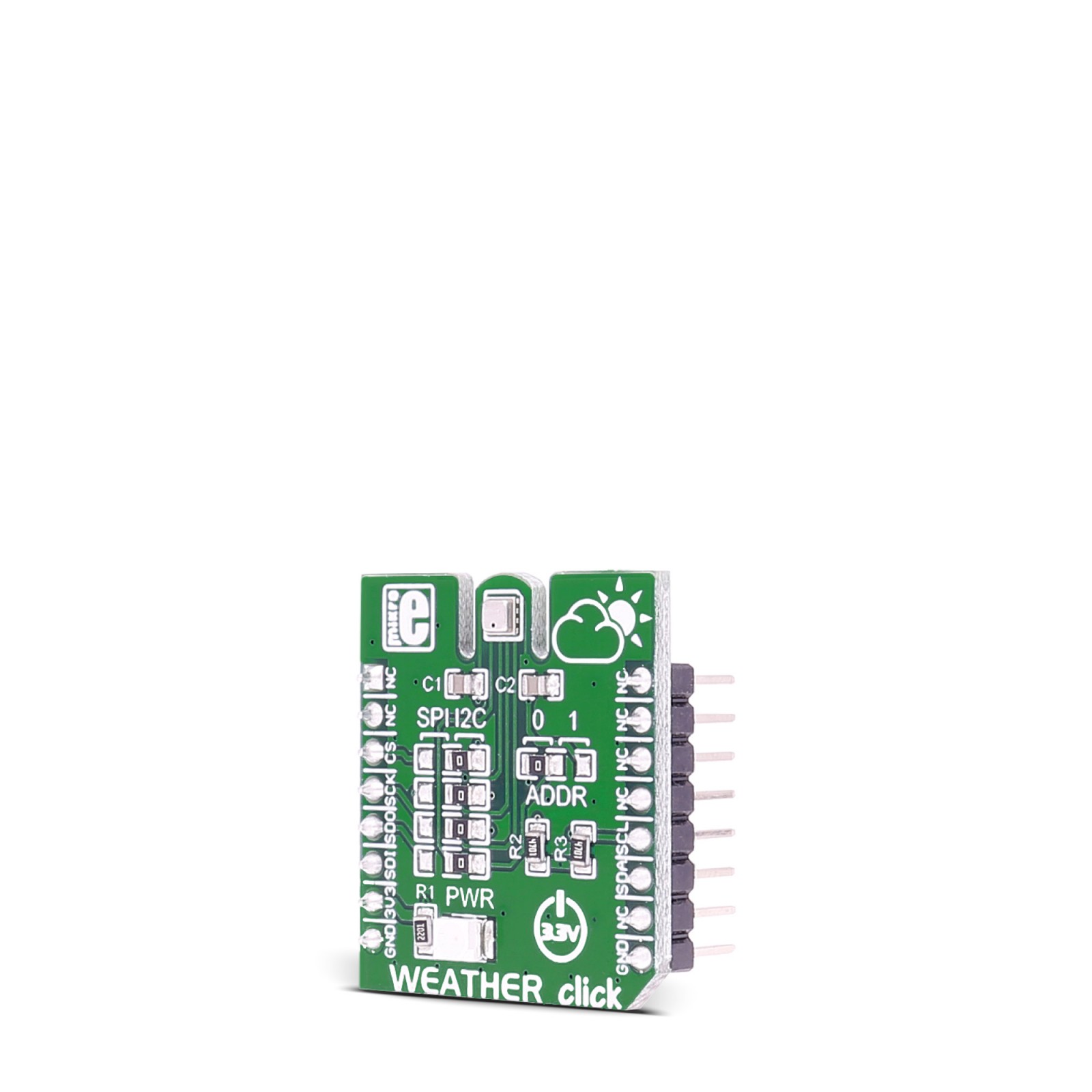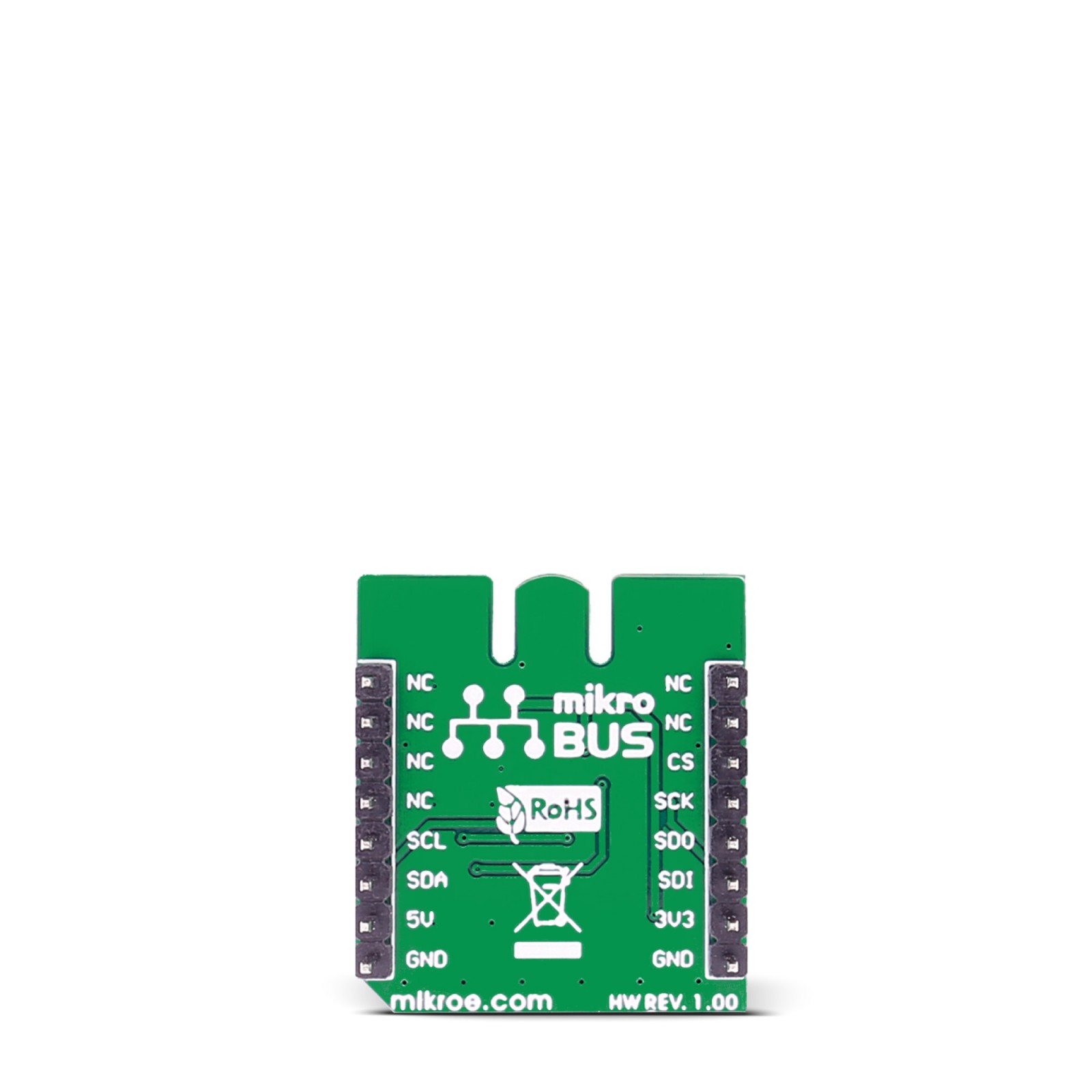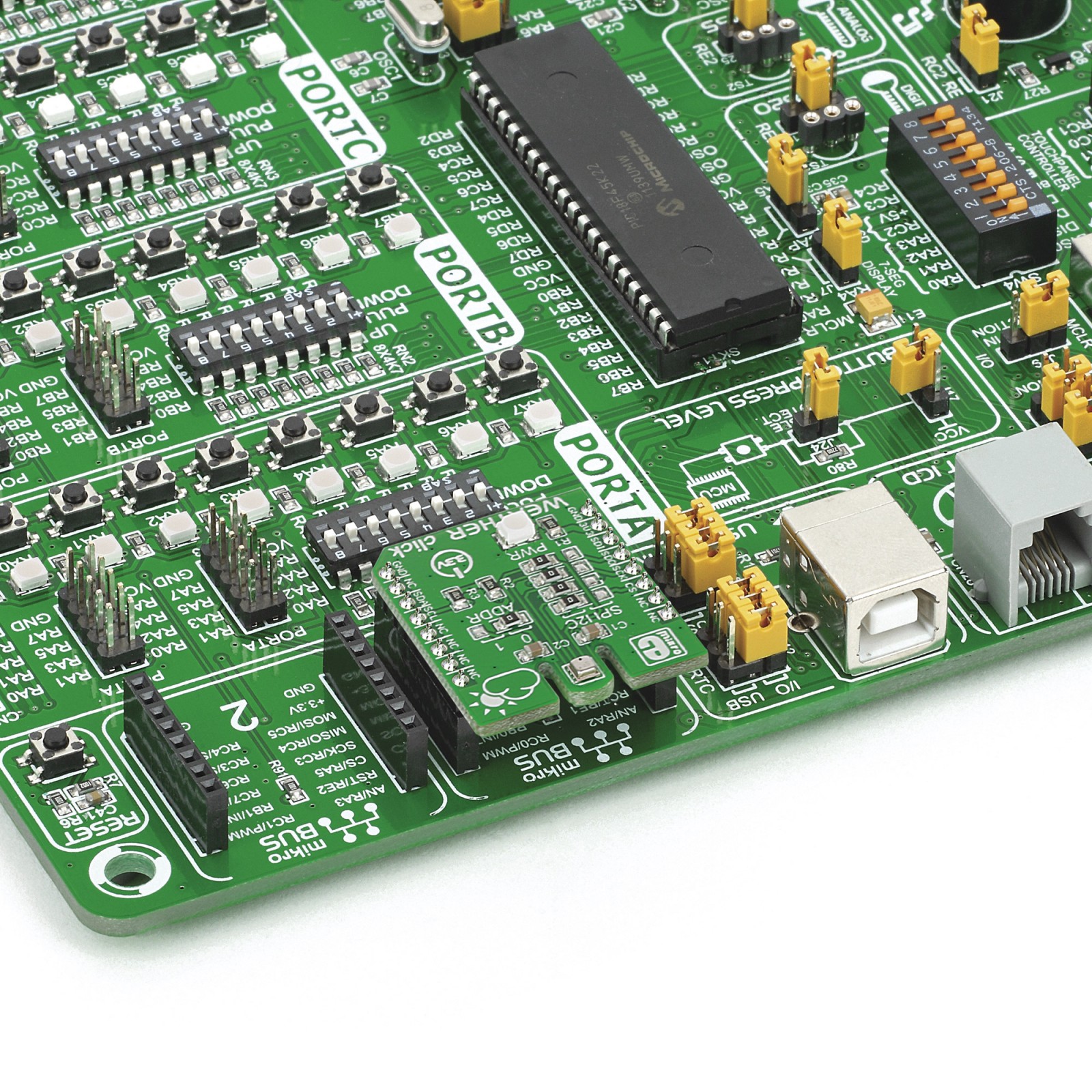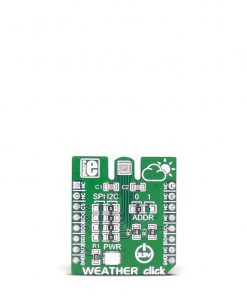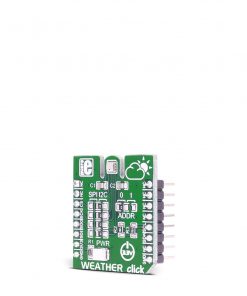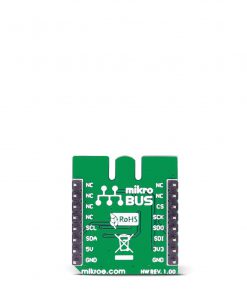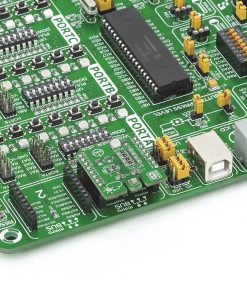Weather Click
R485.00 ex. VAT
Weather click carries BME280 integrated environmental unit from Bosch. It’s a sensor that detects humidity, pressure, and temperature, specifically designed for low current consumption and long-term stability. The click is designed to work on a 3.3V power supply. It communicates with the target microcontroller over SPI or I2C interface.
Stock: Lead-time applicable.
| 5+ | R460.75 |
| 10+ | R436.50 |
| 15+ | R412.25 |
| 20+ | R396.73 |
Weather click carries BME280 integrated environmental unit from Bosch. It’s a sensor that detects humidity, pressure, and temperature, specifically designed for low current consumption and long-term stability. The click is designed to work on a 3.3V power supply. It communicates with the target microcontroller over SPI or I2C interface.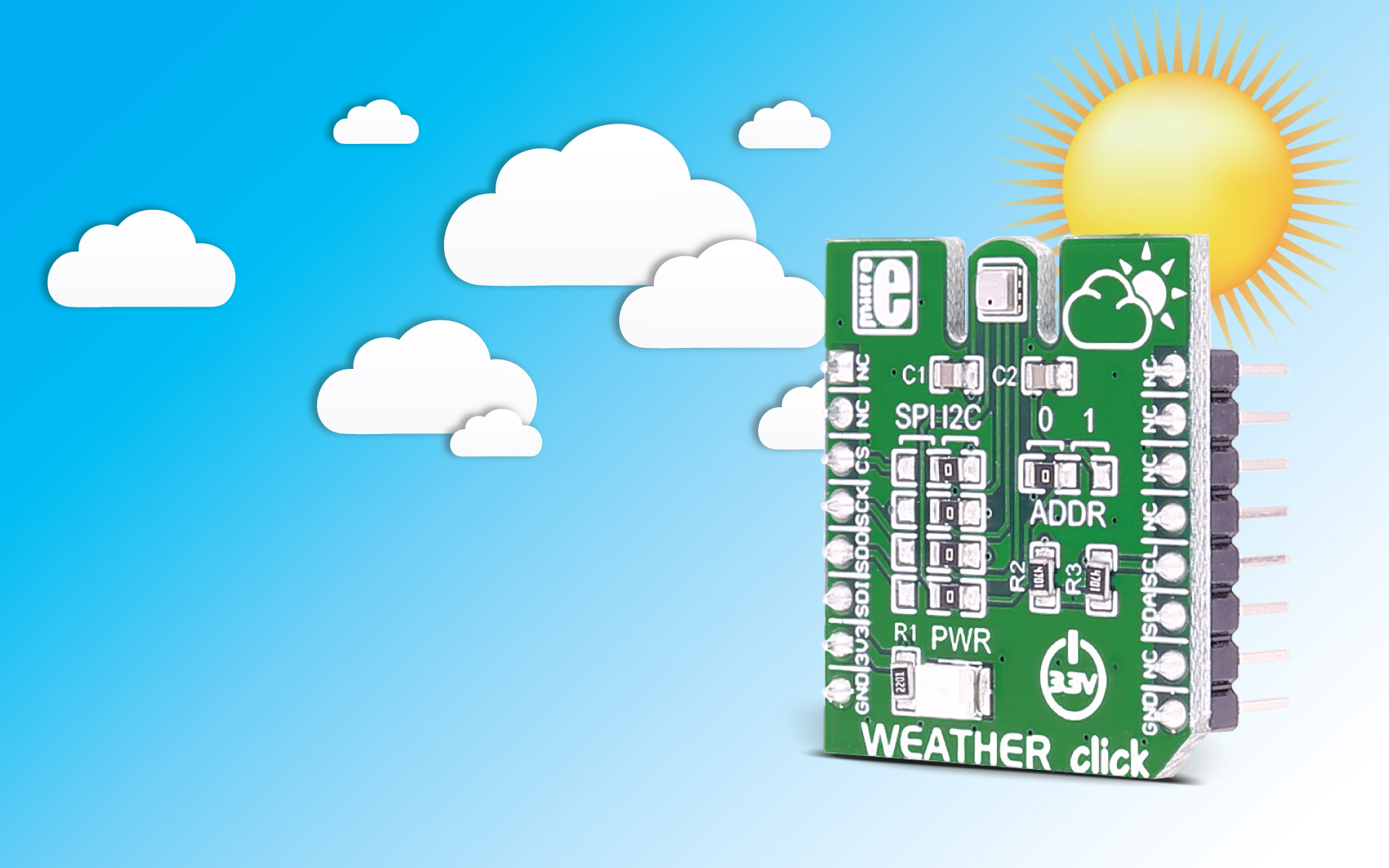
BME280 features
The BME280 is as combined digital humidity, pressure and temperature sensor based on proven sensing principles.
The BME280 IC has high accuracy and reliability for all three sensors. The humidity sensor has a response time of just one second and it’s accurate up to ±3% RH. The pressure sensor has sensitivity error of ±0.25% which is equivalent to 1m at 400m height change). The humidity and pressure sensors can operate independently from each other. Finally, the temperature sensor has a high resolution (up to 20 bit, when IIR filter is enabled) and low noise. The chip has three operating modes: sleep, forced, and normal.
Specifications
Type
Environmental
Applications
Context awareness, home automation control, personalized weather stations, sport and fitness tools and so on
On-board modules
Bosch BME280
Key Features
Three sensors in one: pressure, humidity, temperature. Humidity sensor response time: 1 sec. Multiple operating modes: sleep, force, normal
Interface
I2C,SPI
Compatibility
mikroBUS
Click board size
S (28.6 x 25.4 mm)
Input Voltage
3.3V
Pinout diagram
This table shows how the pinout on RS485 2 click corresponds to the pinout on the mikroBUS™ socket (the latter shown in the two middle columns).
Jumpers and settings
| Designator | Name | Default Position | Default Option | Description |
|---|---|---|---|---|
| JP1, JP2, JP3 and JP5 | Interface Selection | Right | I2C | Jumpers for selection between I2C or SPI communications |
| JP4 | ADDR | Left | Bit 0 | I2C Address bit = 0 |
Programming
Code examples Weather click, written for MikroElektronika hardware and compilers are available on Libstock.
Code snippet
The following code snippet shows the library functions for weather click, that are responsible for returning temperature and humidity.
01 /****************************************************************************************************/ 02 /* Returns temperature in DegC, resolution is 0.01 DegC. Output value of “5123” equals 51.23 DegC. */ 03 /***************************************************************************************************/ 04 05 static long BME280_Compensate_T() { 06 long temp1, temp2, T; 07 08 temp1 = ((((adc_T>>3) -((long)cal_param.dig_T1<<1))) * ((long)cal_param.dig_T2)) >> 11; 09 temp2 = (((((adc_T>>4) - ((long)cal_param.dig_T1)) * ((adc_T>>4) - ((long)cal_param.dig_T1))) >> 12) * ((long)cal_param.dig_T3)) >> 14; 10 t_fine = temp1 + temp2; 11 T = (t_fine * 5 + 128) >> 8; 12 return T; 13 } 14 15 /************************************************************************************************************/ 16 /* Returns humidity in %RH as unsigned 32 bit integer in Q22.10 format (22 integer and 10 fractional bits). */ 17 /* Output value of “47445” represents 47445/1024 = 46.333 %RH */ 18 /************************************************************************************************************/ 19 20 static unsigned long BME280_Compensate_H() { 21 long h1; 22 h1 = (t_fine - ((long)76800)); 23 h1 = (((((adc_H << 14) - (((long)cal_param.dig_H4) << 20) - (((long)cal_param.dig_H5) * h1)) + 24 ((long)16384)) >> 15) * (((((((h1 * ((long)cal_param.dig_H6)) >> 10) * (((h1 * 25 ((long)cal_param.dig_H3)) >> 11) + ((long)32768))) >> 10) + ((long)2097152)) * 26 ((long)cal_param.dig_H2) + 8192) >> 14)); 27 h1 = (h1 - (((((h1 >> 15) * (h1 >> 15)) >> 7) * ((long)cal_param.dig_H1)) >> 4)); 28 h1 = (h1 < 0 ? 0 : h1); 29 h1 = (h1 > 419430400 ? 419430400 : h1); 30 return (unsigned long)(h1>>12); 31 }
Resources
Downloads
| Weight | 24 g |
|---|---|
| Brand | MikroElektronika |


